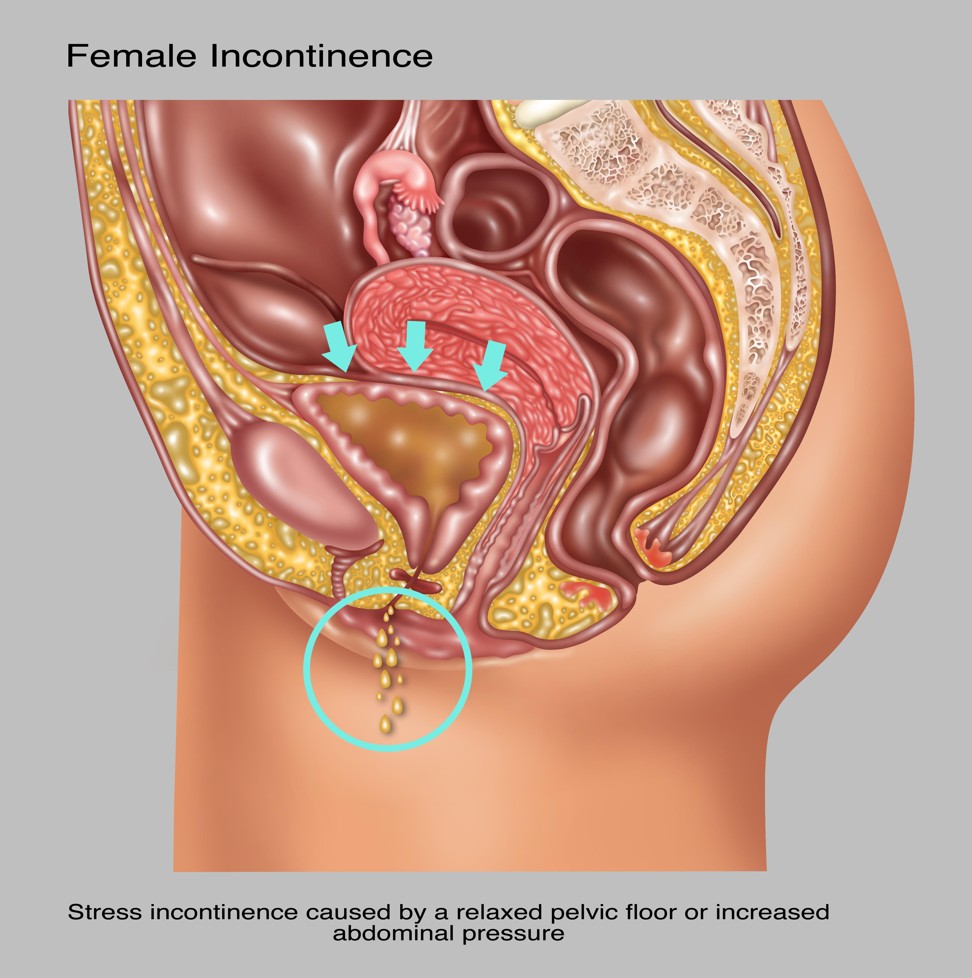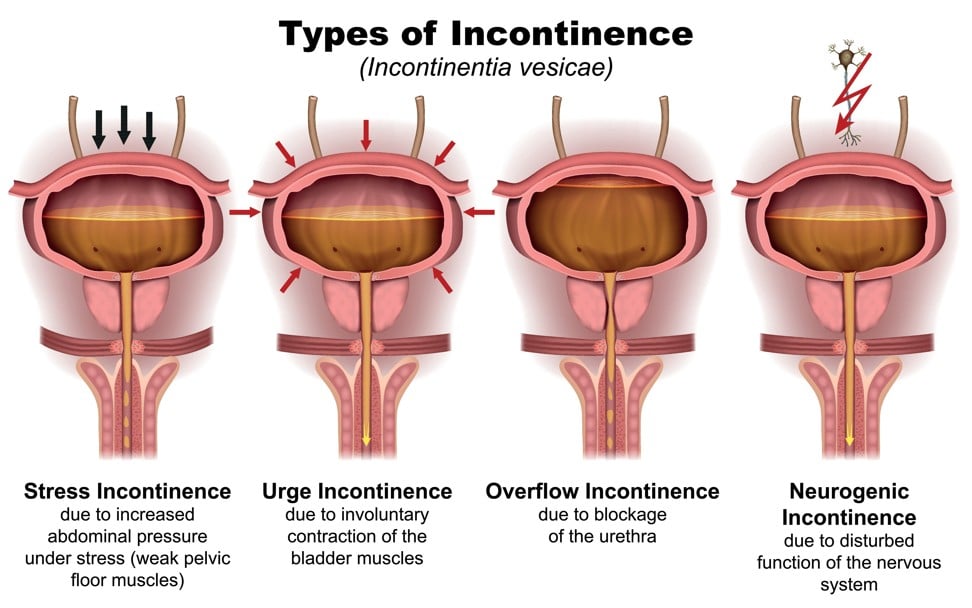
Bladder leakage: tips to cure stress urinary incontinence for women, from lifestyle changes to surgery
- SUI is the most common form of incontinence in women under the age of 60, and can seriously impair quality of life
- Aside from lifestyle changes like drinking less, losing weight and cutting out coffee, pelvic floor exercises can be a big help, with surgery a last resort

Stress urinary incontinence (SUI) is an un-fun fact of life for many women. Defined as the unintentional release of urine during exertion such as laughing, sneezing, coughing, walking or exercising, it is caused by weakness of the pelvic floor that results in inadequate support of the urethra and bladder neck, according to Hong Kong-based urology specialist Dr Vera Chung.
This incapacitating condition is common, Chung says, citing a study published in 2005 that found 34 per cent of Hong Kong women reported suffering from it, and can have a “significant impact on quality of life”.
The prevalence of SUI increases with an ageing population. It occurs when the muscles which help to support the bladder, vagina and rectum – the pelvic floor muscles – or those at the opening of the bladder – the sphincter muscles – become weak. When this happens, urine may leak out under sudden pressure such as when coughing, sneezing or laughing.
SUI is the most common form of incontinence in women under the age of 60, accounting for more than half the cases, according to the US National Association for Continence.

Helen Lo, a sufferer who is not using her real name to maintain confidentiality, says that it “affects many of us in our forties and fifties, when everything is beginning to sag and bag a bit”.
Chung says it mostly affects “women with multiple childbirths, the obese, those with a chronic cough or constipation, [those engaged in] persistent heavy lifting, and women post-menopause”.
Lo says she fits part of that description, having had “three kids, all vaginal deliveries, and I’m menopausal”. She is not, however, overweight or unfit – quite the contrary.
SUI is miserable, she says. “At my worst – the tail end of a horrid bout of flu, say – when I am overcome with coughing fits, I have to wear a panty liner so I don’t wet myself.”
There are several ways to treat the problem, Chung says. First, she advocates lifestyle changes. “Maintain a moderate amount of fluid intake every day – about 1.5 litres is about right. Stop smoking, lose weight and cut down on drinks like coffee – which has diuretic properties – and alcohol.”

For women like Lo who are mindful of – and have implemented – lifestyle habits to improve SUI, there are approaches they can adopt to bring it more under control.
“[For mild SUI] the first-line treatment is training the pelvic floor muscles, ideally instructed by a physiotherapist,” Chung says. “By practising 30 to 50 contractions per day, 60 to 80 per cent of patients will experience symptom improvement within just eight weeks.”
This doesn’t just help prevent you from wetting your pants. Pelvic floor exercises aid both bladder and bowel control. This also help prevent pelvic organ prolapse and increase vaginal tone – which could improve your sex life. Strong pelvic floor muscles can also lead to increased sensitivity during sex and stronger orgasms.

How to do them? Elaine Miller, a UK-based physiotherapist who specialises in the pelvic floor – and performs a hilarious, yet informative, stand-up comedy act on the subject – advocates a “long slow squeeze, and then 10 quick flicks”. The long slow squeeze, she says, helps you develop the muscle for when you need to hang on, say when you’re in a long queue for the loo. The quick little in-out flicks help tone and stop leakage during a coughing fit.
Women are quite disconnected from their pelvic floor and often don’t know how to exercise it, Miller says. She is quite specific. It’s not so much trying to hold a pee in, it’s more about trying to hold wind in – and not dainty little expulsions, but big ones you’d be really embarrassed to drop.

Women with SUI who practise pelvic floor muscle exercises regularly are more likely to report being cured compared with those without any treatment, Chung says.
“The success rate was around 60 per cent according to a large-scale review involving 1,817 women in 2018. The same exercises also improve the symptoms of other types of incontinence such as urge incontinence and mixed urinary incontinence.”
If exercises aren’t enough, Chung says there are other options.
“A laser vaginal procedure uses innovative, minimally invasive laser technology. The application of laser microbeams on the vaginal lining will allow stimulation of new tissue growth and collagen production. It is indicated to treat post-menopausal vaginal symptoms and mild urinary incontinence,” she says.
Tension-free vaginal tape insertion is another minimally invasive surgical procedure available that takes just a couple of hours. The procedure involves inserting a synthetic tape through a small incision in the vagina. The doctor adjusts the tape’s tension just enough to support the woman’s urethra. The patient is often asked to cough to check the tension so that the doctor can adjust accordingly.
The tape is cut level with the skin at the incisions, which can then be closed. The scar tissue that forms at the incisions holds the tape ends in place so that the urethra is completely supported. In some cases, a patient’s own tissue can be used instead of a synthetic material.
According to a study last year on a group of women 17 years after they had undergone the procedure, the success rate was around 90 per cent.
Chung says that while SUI can impair a woman’s quality of life, and cause frustration and anxiety, many who suffer from it are not aware that it is a disease and can be treated.